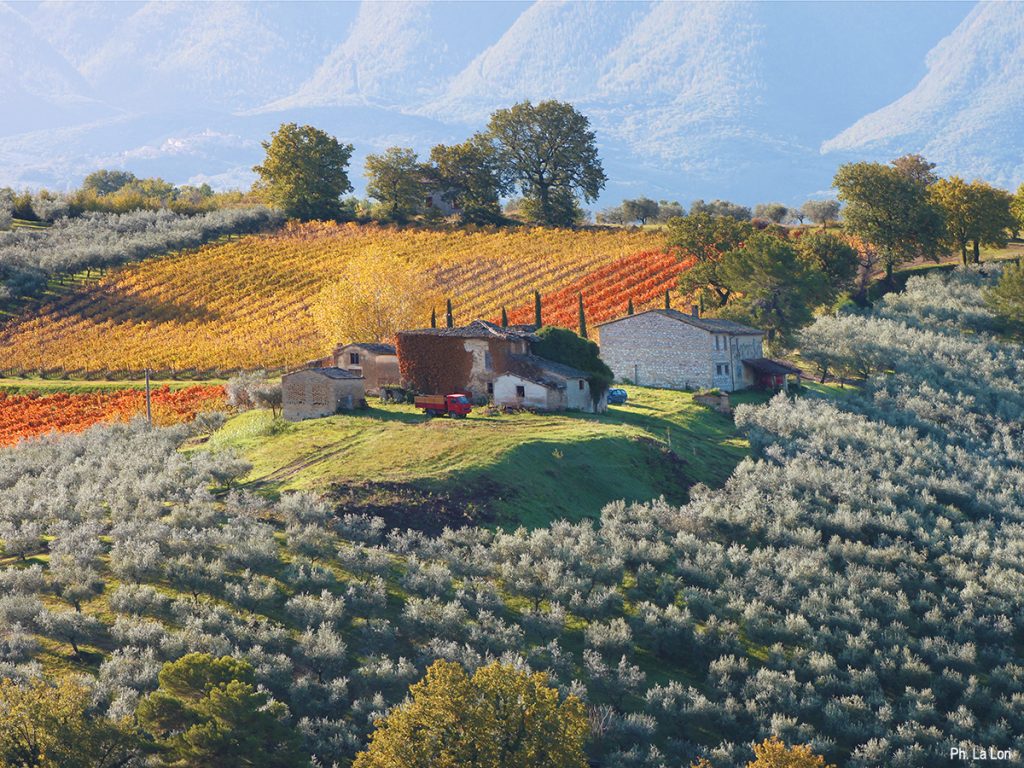Umbria is a region associated with the work of the land and to nature in general.
In the agricultural sector there is great sensitivity towards organic production, which focuses on product quality and respect for natural rhythms, without chemical forcing.
Outside the few large urban centres, life still flows slowly: most people live in rural areas and families continue to keep the traditions alive. Each town has its own recipes and at home the dishes are cooked respecting the teachings handed down from generation to generation. Many have a plot of land from which they get fruit and vegetables and raise poultry. Often there is a pig, raised to prepare salami, sausages, capocolli, pancetta and hams. There is no shortage of vines and olive trees, from which wine and oil are obtained for family consumption.
Specialties of Umbrian gastronomy and territorial excellence
This lifestyle translates into a great culinary tradition, full of dishes cooked the old-fashioned way: on skewers, grills, even under the ashes. Recipes with an ancient flavour, already present in the sumptuous court banquets of local lords and today re-proposed in a contemporary key. At the base of the preparations, many regional specialties, certified and regulated products:
- Legumes and vegetables: lentils from Castelluccio di Norcia, spelt from Monteleone di Spoleto, black celery from Trevi, saffron from Cascia, red onion from Cannara, beans from Lake Trasimeno
- Mushrooms and tubers: the black and valuable white truffle of Norcia, the red potato of Colfiorito
- Meat and fish: carp from Lake Trasimeno, also known as queen, trout from Valnerina , ham from Norcia, white beef from the Central Apennines
- Desserts: the Terni gingerbread
And still many typical products that are the heritage of the entire region: the Torta al testo, the extra virgin olive oil, the organic honey produced by the many beekeepers, the game to be cooked on the spit, the pecorino and the ricotta.
The pork gives rise to many delicacies: one is the porchetta, widespread throughout central Italy, with slight variations in the mix of herbs and spices that impart flavour. It is so beloved that in Umbria there is a festival dedicated to it that brings together national excellence.
The cured meats deserve an honourable mention: raw ham, capocollo, salami, guanciale (or barbozzo). Then there are less conventional sausages: the mazzafegato, Slow Food presidium of the Upper Tiber Valley made with leftovers from the pig slaughter, liver and fennel flowers; the wild boar salami and venison. Rare products of absolute quality, for palates who love to experiment.

Umbria is also a land of good drinking and great wines: warm and velvety reds flanked by harmonious and fresh whites. It ranges from Rosso di Torgiano, a wine with a ruby colour, intense and penetrating, to another wine with a good body, which caresses the palate, the Rosso di Montefalco with a fruity flavour. The Sagrantino di Montefalco is also noteworthy. Among the whites, the Orvieto stands out, with its more or less intense straw yellow colour, delicate aroma and dry flavour, as well as Grechetto from the Trasimeno Lake area.
Simply put, Umbria is a green region for green tourism. Spending a holiday in this beautiful land means coming into contact with ancient traditions, fully savouring the cuisine of the past skilfully revisited in the present, rediscovering simple flavours and almost forgotten fruits of the earth. If you decide to come, open yourself to emotions that also pass from eating and drinking well.


